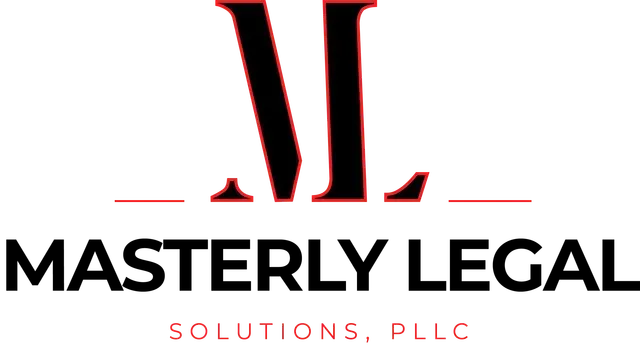Digital Rights Management for Businesses: A Must-Have for Content Security
In today's digital age, safeguarding your company's digital assets is more critical than ever. Digital Rights Management (DRM) offers a robust solution to protect your valuable content from unauthorized access and distribution.
Understanding Digital Rights Management (DRM)
DRM encompasses technologies and strategies designed to control access to digital content. It protects your intellectual property rights by making sure that only authorized users can access and utilize your digital content.
How DRM Works
DRM systems employ encryption to secure digital files, making them accessible only to authorized users. They also implement access control measures to restrict unauthorized usage and distribution.
The Importance of DRM for Businesses
Implementing DRM is essential for businesses aiming to protect their digital content and maintain control over its distribution.
Protecting Intellectual Property
DRM safeguards your intellectual property by preventing unauthorized users from accessing or distributing your digital assets. This protection is crucial for maintaining your competitive edge.
Ensuring Compliance with Copyright Laws
By controlling access and usage, DRM helps businesses comply with copyright laws, reducing the risk of legal issues related to unauthorized distribution.
Key Benefits of Implementing DRM
Adopting DRM solutions offers several advantages for businesses.
Revenue Protection
By preventing unauthorized distribution, DRM ensures that only paying customers can access your content, thereby protecting your revenue streams.
Control Over Content Usage
DRM enables content creators to define how their digital products are used, including restrictions on copying, printing, or sharing.
Enhanced Data Security
DRM systems protect sensitive data by ensuring that only authorized users can access it, thereby reducing the risk of data breaches.
Implementing DRM in Your Business
To effectively implement DRM, consider the following steps.
Assess Your Digital Assets
Identify the digital content that requires protection, such as software, multimedia content, or sensitive documents.
Choose the Right DRM Solution
Select a DRM software solution that aligns with your business needs and offers robust protection features.
Educate Your Team
Ensure that your team understands the importance of DRM and is trained on how to use the chosen DRM systems effectively.
Securing Your Digital Assets with DRM
Integrating Digital Rights Management into your business strategy is crucial for safeguarding digital assets and controlling their distribution. Implementing robust DRM solutions helps protect intellectual property, prevent unauthorized use, and ensure compliance with copyright laws, allowing businesses to maintain security while maximizing the value of their content.
DRM Protection: Safeguarding Content Owners in the Digital Age
For businesses that rely on digital assets, DRM protection is essential for ensuring secure distribution and preventing online piracy. Content owners who distribute copyrighted material through streaming services or online marketplaces must implement robust security measures to manage access and prevent unauthorized use. DRM helps organizations enforce license management protocols, ensuring that only authorized users can interact with their content.
With increasing concerns over customer data security and data privacy regulations, businesses must adopt advanced file-level encryption to protect intellectual property while maintaining compliance. Online authentication methods further enhance security by verifying users before granting access through controlled distribution channels. By leveraging DRM solutions, businesses can safeguard their digital content, uphold legal rights, and maximize revenue in an increasingly digital-first economy.
How DRM Technology Helps Media and Entertainment Companies Protect Digital Content
For media and entertainment companies, safeguarding revenue-generating content is a top priority in the face of rising copyright infringement and unauthorized distribution. DRM technology enables businesses to protect digital media, including audio files, videos, and software programs, by implementing DRM restrictions that restrict access to only authorized users.
By integrating DRM into their distribution strategies, content providers can control how their materials are shared, ensuring compliance with licensing agreements while maximizing profitability. These protections not only protect digital content but also help maintain the integrity of creative assets across various platforms. In an era where digital piracy threatens industry revenues, investing in DRM solutions is crucial for long-term success.
Strengthening Content Protection: Why Businesses Need Digital Rights Management
In today's digital landscape, protecting content is more critical than ever for businesses that distribute digital assets. Without robust copyright protection, companies risk unauthorized use, illegal sharing, and exposure to torrent sites, which can lead to significant revenue loss. Digital Rights Management (DRM) solutions help companies retain ownership of their intellectual property by implementing copy protection measures that prevent infringement while ensuring access for legitimate users. Advanced technologies, including blockchain technology, are also enhancing licensing information tracking and transparency for copyright holders.
Moreover, DRM systems address cybersecurity challenges by securing sensitive information and sharing sensitive data with the right stakeholders under controlled conditions. Businesses must balance security with fair use compliance and copyright education to uphold IP rights while fostering ethical digital consumption. By implementing a strong DRM strategy, businesses can maintain control over their content, mitigate risks, and ensure their digital assets remain profitable and secure.
The Role of DRM in Safeguarding Copyrighted Material
For businesses and media and entertainment companies, ensuring the security of copyrighted material is essential for protecting intellectual property and maintaining revenue streams. With the rise of digital distribution, DRM technology plays a crucial role in preventing unauthorized access to copyrighted material, including audio files, videos, e-books, and software programs.
By implementing DRM restrictions, content owners can restrict access to only licensed users while preventing copyright infringement. This ensures that revenue-generating content remains profitable while being securely distributed across streaming services, online marketplaces, and other digital platforms. As the demand for digital content grows, businesses must prioritize DRM solutions to protect their assets and maintain control over their copyrighted material.
Strengthening Copyright Protection with DRM and Access Control
To safeguard copyrighted material, businesses must implement access control measures that prevent unauthorized distribution and piracy. DRM technology allows content providers to enforce access control, ensuring that only authorized users can view, download, or interact with revenue-generating content such as audio files, e-books, and software programs.
By integrating access control with DRM restrictions, businesses can protect digital content, manage licensing agreements, and prevent copyright infringement across streaming services and online marketplaces. This level of protection helps businesses retain ownership of their intellectual property, maximize revenue, and maintain compliance with industry regulations.
Contact Us for a Free Consultation
At Masterly Trademarks, we specialize in helping businesses protect their digital content. Contact us at (972) 236-5051 to book a free consultation. Our experts are ready to answer any questions you may have about implementing DRM solutions tailored to your needs.
You might also like



